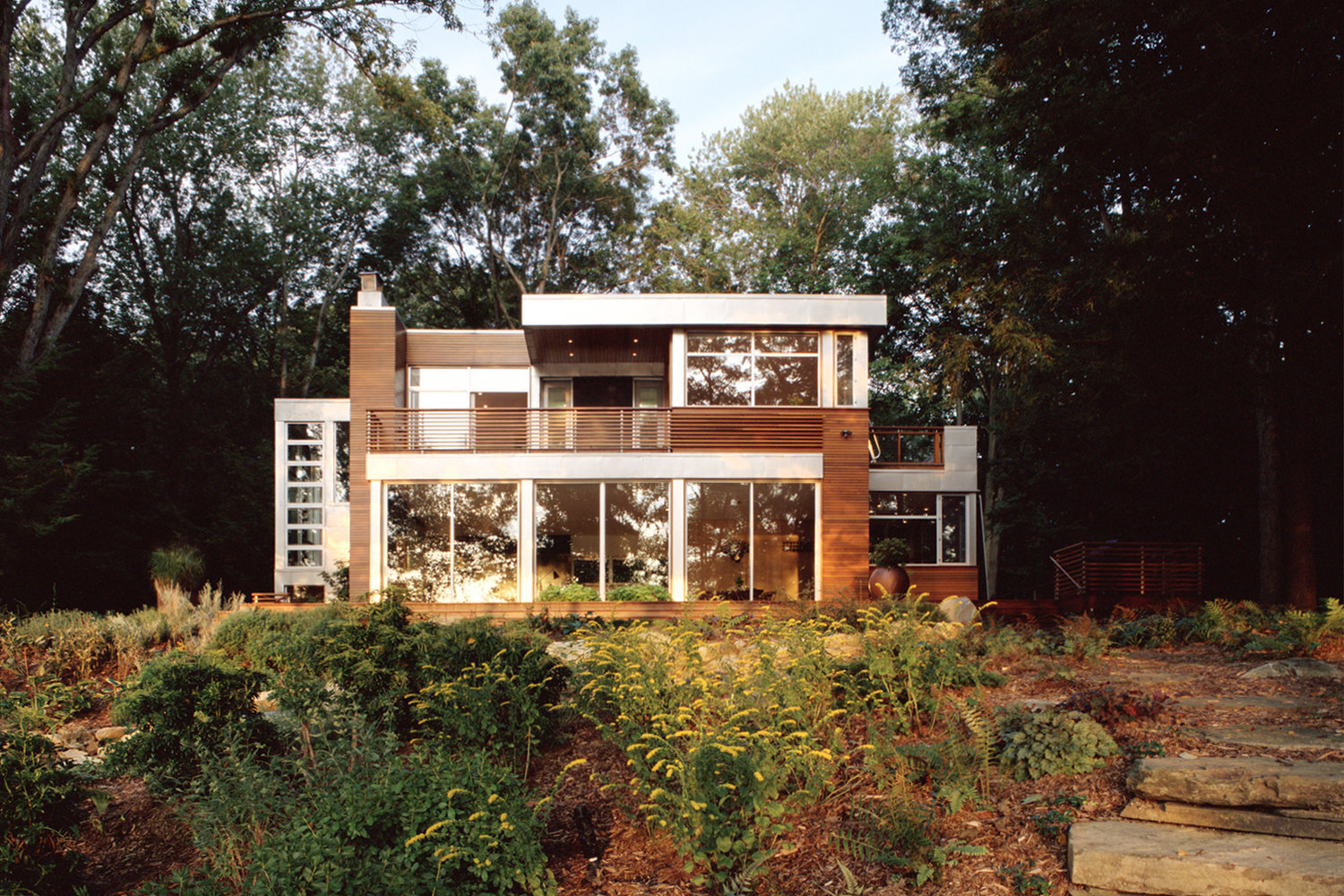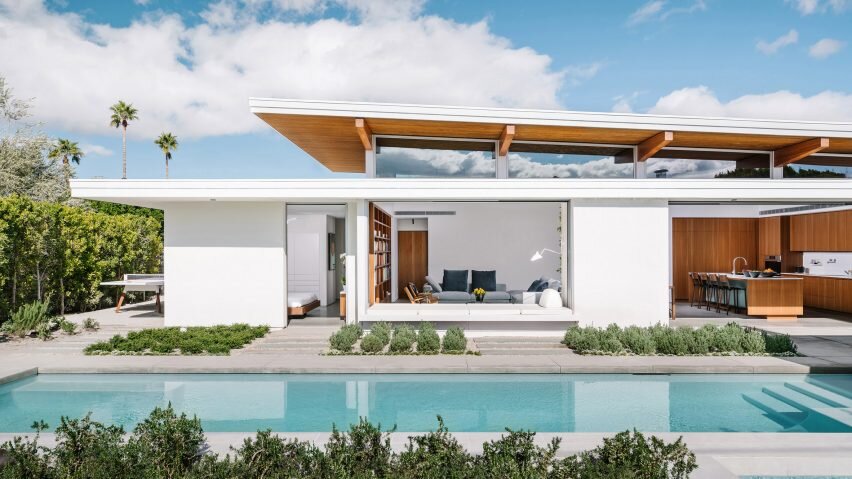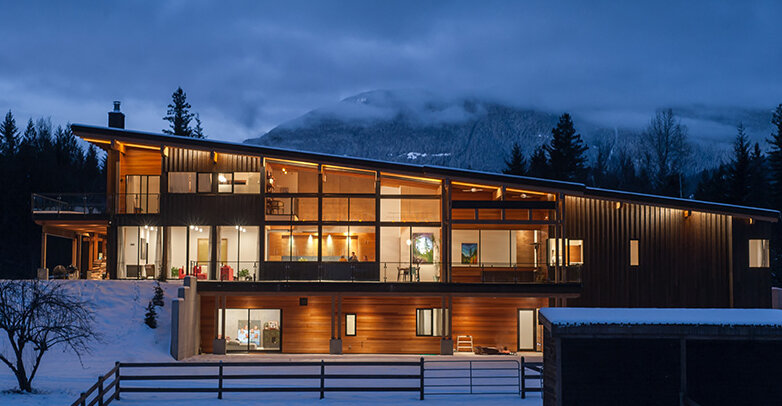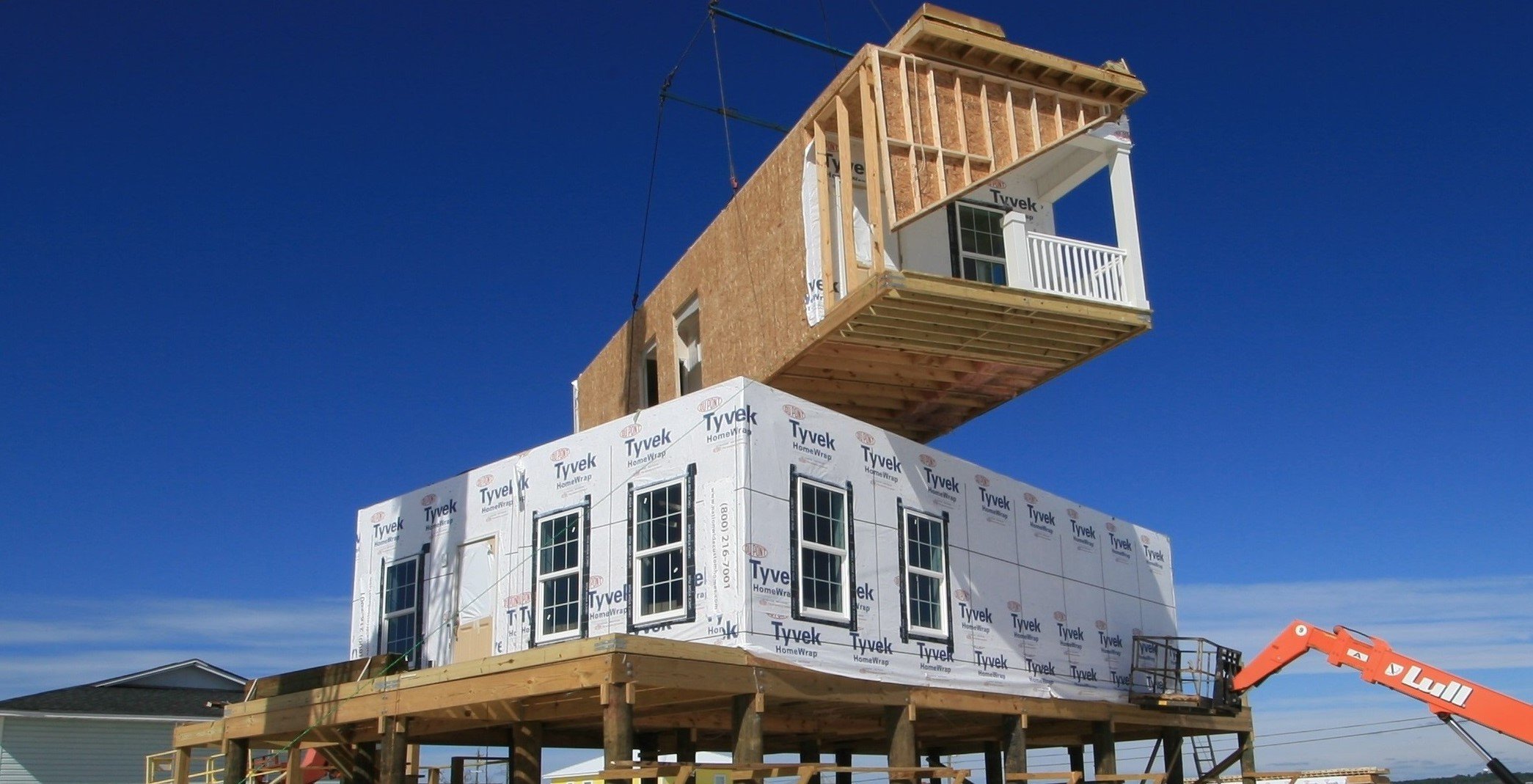Guide To Building a Custom Home
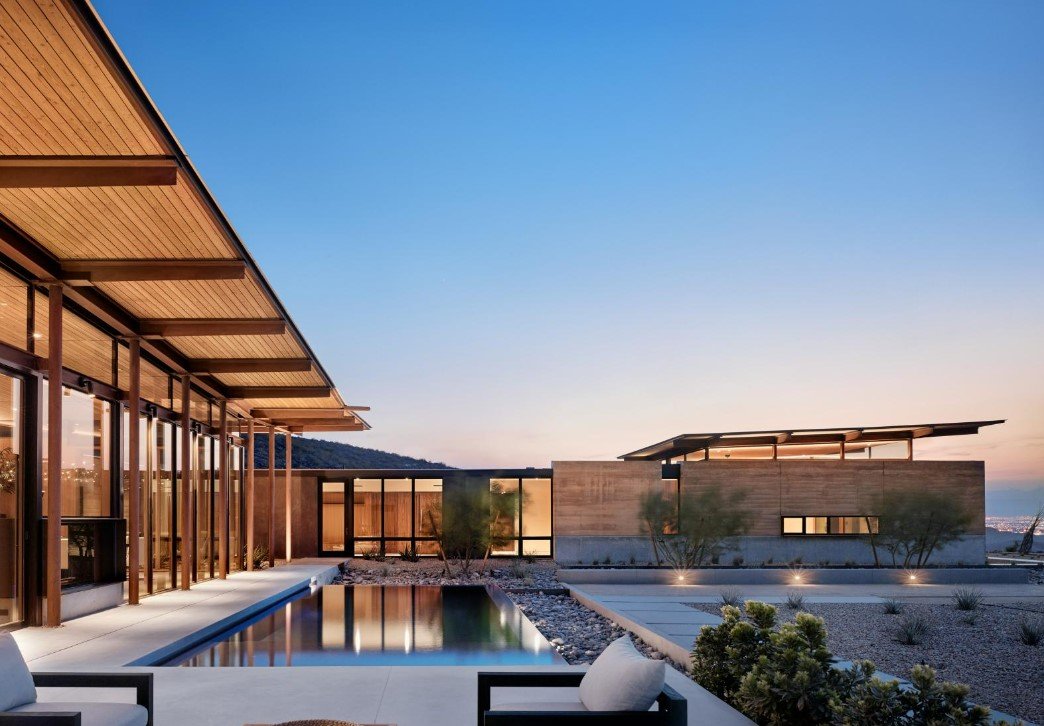
Guide To Building a Custom Home
If you find yourself wondering how to build a custom home or wanting help finding and then choosing between custom home builders, you’re in the right place. We have reviewed hundreds of companies (both pre-designed home builders and custom home builders) and helped hundreds of thousands of customers learn about the process of building a house.
Based on the nature of our site, we have a unique position to observe the home building trends in the United States, in real-time. For example, we have seen markets develop for affordable housing (manufactured homes, pre-designed homes, tiny homes, ADUs), alternative architecture (shipping container homes, a frame houses), and recently, custom homes.
Because of the nature of custom home construction, there is a wide range of custom home builders and an even wider range of possibilities when building a custom home. These options include architectural distinctions like custom modern homes, custom cabins, and luxury custom homes as well as options surrounding construction type: custom modular homes, custom kit homes, or site-built custom homes.
Below, we have created a guide to help you better understand and navigate a custom home build project. We have broken down the process of building a custom home, choosing between custom home builders, and frequently asked questions about custom home builders and building a custom house.
Process of Building a Custom Home
Depending on where you are in the process, there are several logical starting points for beginning a custom home build, the next steps in choosing between custom home builders and moving along with your house will be unique.
To simplify things (or to check that you are on the right track if you’ve already begun planning your project), we’ve started our list of steps in building a custom house from the very beginning of the process.
Decision Phase
Given that you are here, on our site that specializes in builder & architect reviews and guides to building prefab & modular homes, it is likely that, at the very least, you’re thinking about a new home. That means that the next two items on your checklist are deciding between:
Build vs. Buy
and
Custom vs. Standard
The build v. buy decision comes down to whether or not you would like to build a new home or whether you would like to buy a prebuilt home, whether that be a new construction home or a house that is being sold by an existing owner. At this stage, one of the biggest factors is do you have the time to wait for a new house to be designed and built, a process which can range anywhere from several months (6-9 months at the shortest) to several years (2+ years, especially in the case you still need to buy land, there are multiple permitting/approval phases, traditional, stick-built construction etc.).
Should you decide that you would like to build rather than buy a house, the next decision that you must make is whether you would like to build a custom or standard, pre-designed home. For this decision, there are several factors that may impact your answer.
First, your design and style preferences may determine whether it is worth it to build a pre-designed floor plan. In the case that you are looking for a highly-unique design or unique architectural features, it might be easier to build a custom home.
Second, does your budget allow you to build a custom home? While building a custom house itself is not inherently expensive, determining your wants, needs, and importantly, your location will give you a better idea of the cost of building a custom home. It is our experience that the typical costs for a custom home range from $300 - $600+ per square foot. On the other hand, a pre-designed home typically costs between $250 - $500 per square foot. These turn-key cost ranges include all stages of the process except the cost of buying land. The wide range in cost comes from regional cost variations, the cost of building on different lots - sloped, in special risk areas, and differences in customer want (high-end vs. off-the-shelf finishes, the quality of appliances, custom trades work, etc.).
Lastly, do you have the time to build a custom home? This question has two parts to it - do you have the time it takes to manage a custom house build and do you have the time to wait for your custom home to be built? The first question depends a lot on the custom home builders you choose and how hands-on you would like to be. Many general contractors and architecture firms, especially higher-end companies, tend to offer project management services. This option affords buyers the luxury of being able to pick and choose which phases of the project they’d like to be involved in. If you don’t work with a company that offers project management, or you’d like to handle it yourself, buyers should be prepared to handle and coordinate all stages of the project including; permitting, scheduling, and coordinating work between local officials, architects, and contractors.
If, after that, you have decided that you would like to work with a custom home builder, the next step is the planning phase.
2. Planning Phase
The planning phase, it can be argued, is the most important phase of building a home and choosing between custom home builders. During this stage, you must determine and coordinate many of the specifics of your project. The most important elements of this phase answer the questions:
How?
How are you going to pay for your custom home? How much are you willing to pay for a custom-built home? The answers to these two questions are the biggest some of the biggest parameters that will help you determine your answers to the following questions.
Where?
Where are you going to build your house? Do you already own land or do you need to purchase a lot? Your plot of land may greatly affect the cost of your project and impact the possible designs for your custom home (if you live in an area with a mandatory design review process). If you already have an idea of what home builder you want to work on your custom home, it may be helpful to consult them during the land buying process.
What?
What type of house are you going to build? Are you looking for a specific architectural style? Do you need it to have a minimum square footage or a minimum number of bedrooms?
When?
When are you planning on building your home? Many builders and companies have a waiting list, especially right now (June 2022). When will your building lot be ready to build on and when will you have financing arranged to begin paying for construction?
Who?
Who is going to design your house? Who is going to build the home? Who is going to manage the project? (Continue reading below where we go over how to choose between custom home builders)
Once you have answered these questions, it is time for your project to move on to the next stage of the process - execution.
3. Execution
The execution phase is where your entire project comes together. At this point, you should have your answers to the major questions listed above and are now in a position to coordinate your home’s construction.
At this point, one of the first execution items is securing financing. If you plan on paying cash for your home, this is less important. If you plan to use a construction loan, however, you will need to work with a bank or lender to finance your project. While it might not be 100% exact for a custom stick-built home, our guide to financing a prefab home is a helpful resource for understanding the process of financing a custom-built home.
Another key phase of the process is buying land if you do not already have a lot. Remember it is important to be sure that your lot is zoned to build a residential home, the lot conditions (soil, slope, potential hazards) allow for building a custom home.
After you own land, or in some cases during the purchasing process, you can begin the planning and design process. This step is what makes a custom-built home so unique. As a buyer, you can work with your architect to design the exact home that you want and need (given that it is feasible and permitted). This step often consists of multiple versions of the home design, and once you are happy, it then moves on to be developed into a set of engineered plans that must then be approved by the local building department.
The last, and one of the most important parts of the project, is the actual construction of your custom home. Depending on your chosen custom home builder, certain parts of the process may be completed by the same or different contractor. This includes three main areas: site prep, structural work, and finishes.
In the first step, the site is cleared and prepared and a foundation is laid. At this point, a builder may also have to prepare utility connections if there are no pre-existing utilities. Next, the structural work can begin. If you are working with a prefab custom home builder, this step often begins simultaneously with site preparation and includes manufacturing the structural components of the home including framing and utility rough-in. If not, these steps take place on the prepared build site.
Once the structural components are finished, either on-site or in an off-site factory, in which case they’re shipped to the lot and assembled, the interior of your home can be finished. At this stage in a custom project, buyers can essentially choose the exact finishes they want to be included in their home. And while custom home builders tend to have areas that they specialize in, modern architecture or cabins, for example, buyers essentially have carte blanche in determining the interior design of their home. Once this phase is complete and final inspections have been carried out, the home is complete.
Frequently Asked Questions:
How do you build a custom home?
There are two good starting points when deciding how you’d like to build a custom home. In the event that you already have a local builder that you’d like to work with, they may be able to recommend quality architects and designers for your project, who can then help you begin the process of building a custom home. Alternatively, you can begin by working with an architect who may also have a network of local builders that can facilitate the actual construction of your custom home.
How much does it cost to build a custom home?
Providing an exact price range for the cost of building a custom home is a particularly nuanced question. Generally speaking, however, we see custom homes range in cost from $300 - $500 per square foot, though there are certain projects that fall outside of that range. At the low end, it may be possible to build a custom home for as little as $200 per square foot or build a luxury custom home for $600+ per square foot.
In the end, though, these are rough estimates that should be used as a reference point when moving forward with your project. To get a better idea of your project’s cost, it will be helpful to speak with a local builder and an architect or designer.
Ultimately the final cost of your custom-built home will depend on factors such as location and local labor costs, the amount of work required to prepare your site for building, home size, and desired level of finishes. Buyers in coastal cities like Los Angeles, San Francisco, Seattle, New York, Boston, etc. and other high-demand cities like Denver, Dallas, Chicago, and Atlanta will likely have significantly higher costs than buyers located in more rural areas.
How long does it take to build a custom home?
Much like cost, the timeline for your custom home project varies greatly by your project type and location. We have seen custom homes be built as quickly as 9 months or as long as 2 years. Shorter projects are often a result of a quicker design process, fast permitting times, and quick construction. Longer projects can be a result of many factors including a prolonged design phase, delayed permitting, a construction backlog, delayed material deliveries, and more.

